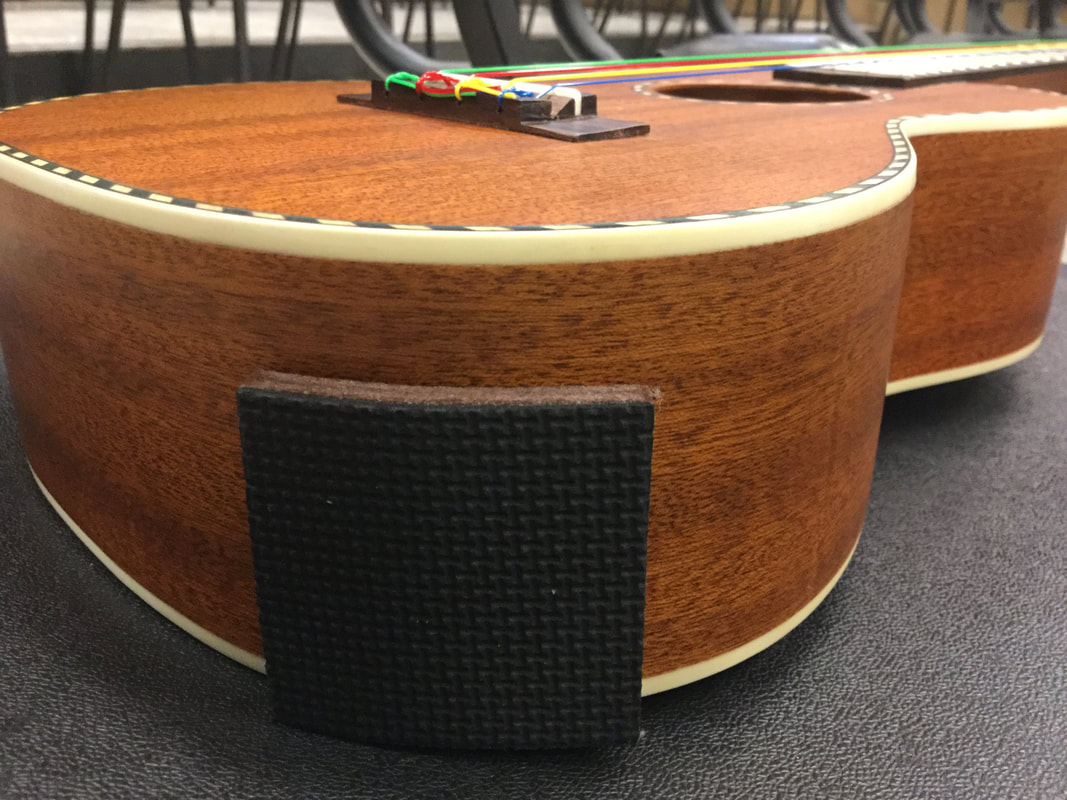As I'm finishing my first quarter this year, and prepping my materials for my students in the upcoming quarter, I'm reminded how important playing position is in giving students the best possible chance of creating a successful sound.
The first challenge is always the ukulele position itself. I personally steal...ahem...borrow classical guitar technique for holding the ukulele. We don't stand and play in my classes (a topic for another time), so we spend a good amount of time just getting the position and balance of the instrument right before really trying to get a sound out of it.
The first challenge is always the ukulele position itself. I personally steal...ahem...borrow classical guitar technique for holding the ukulele. We don't stand and play in my classes (a topic for another time), so we spend a good amount of time just getting the position and balance of the instrument right before really trying to get a sound out of it.
| Check out the (hopefully) infamous video of Jake Shimabukuro playing "While My Guitar Gently Weeps" for a great example of seated ukulele position. In my mind, the goal of the instrument posture is so that the player does not have to support the neck while they play. This frees the fretting hand to move as needed. | |
Non-Slip Pad to facilitate instrument angle | This is what I teach my students for instrument posture:
|
| For the fretting hand, my goal is to keep the fretting wrist straight to increase finger grip strength and freedom. My rules for the students:
| Velcro dot for thumb placement |
One of the things that we miss most often, though, when trying to get a clear sound on the instrument, though, is the exact placement of the finger in the fret space. A lot of the time, students naturally place their fingers in the center of the fret space, which requires more force on the fingertip to get a clear sound.
Try this yourself (and I always demonstrate the same thing): choose any string, any fret, and lightly fret it directly behind the fretwire, just where you can feel the string start to "incline" toward the fret. Find just the right amount of force to get a clear sound, to the point where any lighter would mute the string.
Once you find that, slide your finger back with the exact amount of pinch strength. You'll notice that the tone will quickly get "stuffy" or even muted. The goal, of course, is to get the maximum return for the least amount of work. In other words, "smart laziness." THAT the students get!
Students will argue that they see great players with thumbs up, etc. all the time, and yes, we do. I teach them that this is the "default" position that you can deviate from when needed, and they quickly see that they can be much more successful in getting a clear tone with decent instrument positioning. If it ultimately doesn't "stick," then they have developed the ability to play in multiple ways!
Try this yourself (and I always demonstrate the same thing): choose any string, any fret, and lightly fret it directly behind the fretwire, just where you can feel the string start to "incline" toward the fret. Find just the right amount of force to get a clear sound, to the point where any lighter would mute the string.
Once you find that, slide your finger back with the exact amount of pinch strength. You'll notice that the tone will quickly get "stuffy" or even muted. The goal, of course, is to get the maximum return for the least amount of work. In other words, "smart laziness." THAT the students get!
Students will argue that they see great players with thumbs up, etc. all the time, and yes, we do. I teach them that this is the "default" position that you can deviate from when needed, and they quickly see that they can be much more successful in getting a clear tone with decent instrument positioning. If it ultimately doesn't "stick," then they have developed the ability to play in multiple ways!
| Sungha Jung is another one to watch for playing posture and beautiful fretting hand position. Plus he's playing a harp ukulele. Which I covet. Highly. Watch this. | |




 RSS Feed
RSS Feed
